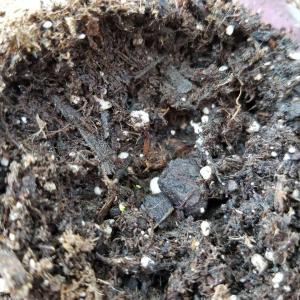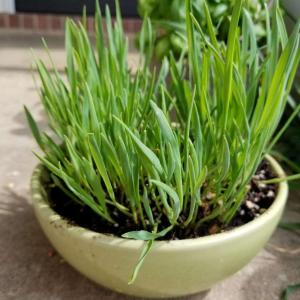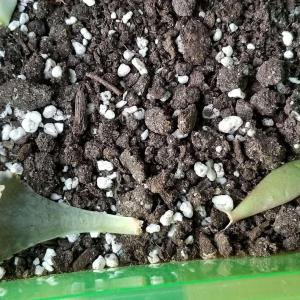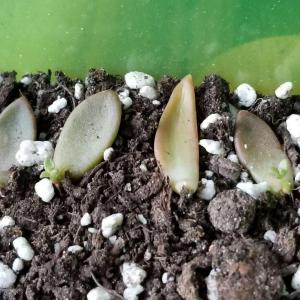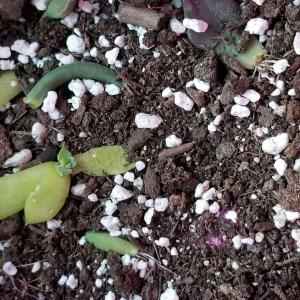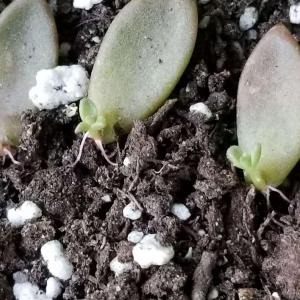文章
Dummer. ゛☀
2017年06月30日

Another name for blue linen
Also called blue linen flax.
The growth habit of blue flax
Blue flax is a plant which prefers light. It has stronger adaptability and cold resistance.
The environmental requirement is to feel cool, and the soil is generally fertile and well drained.
Garden applications of blue linen
Blue flax flowering beautiful and long flowering, large amount of flowers, so it is generally used for landscaping plants, breeding in a variety of natural areas, so that it creates a beautiful landscape.
In recent years, because of the beauty of the blue flax, it is easy to breed, and many people use it as a potted flower for breeding. Highly ornamental.
Morphological character
Flax is a biennial herbaceous flower native to Europe. Plant height 50 to 60cm, leaves thin and many, linear spiral arrangement, flower terminal or axillary, pedicel slender and drooping, corolla 5, blue or light blue, fruit as capsule. Blue linen every year at the beginning of April growth. At the beginning of November emarcid.
Florescence 5~7 months, open one after another.
The opening time of each flower is not long, but the whole plant is open for a long time.
The fruit is ripe for 810 months.


Also called blue linen flax.
The growth habit of blue flax
Blue flax is a plant which prefers light. It has stronger adaptability and cold resistance.
The environmental requirement is to feel cool, and the soil is generally fertile and well drained.
Garden applications of blue linen
Blue flax flowering beautiful and long flowering, large amount of flowers, so it is generally used for landscaping plants, breeding in a variety of natural areas, so that it creates a beautiful landscape.
In recent years, because of the beauty of the blue flax, it is easy to breed, and many people use it as a potted flower for breeding. Highly ornamental.
Morphological character
Flax is a biennial herbaceous flower native to Europe. Plant height 50 to 60cm, leaves thin and many, linear spiral arrangement, flower terminal or axillary, pedicel slender and drooping, corolla 5, blue or light blue, fruit as capsule. Blue linen every year at the beginning of April growth. At the beginning of November emarcid.
Florescence 5~7 months, open one after another.
The opening time of each flower is not long, but the whole plant is open for a long time.
The fruit is ripe for 810 months.


0
0
文章
Dummer. ゛☀
2017年06月30日

Nemesia the nickname
Nemesia, also called capsule from flowers, love honey West, resistance in moesia.
The growth habit of the nemesia
Nemesia is love and warm sunny climate plants in aquaculture nemesia, more afraid of high temperature, so the summer should pay attention to cool. When selecting soil, nemesia generally choose loose fertile and good drainage and humus rich soil.
Nemesia role
Nemesia delicate flowers, in fact, its main role is to watch.
Nemesia especially odd induced flowers, if tall varieties can be used as cut flowers for ornamental. Dwarf variety is more suitable for potted cultivation, breeding or in the flower inside, are ornamental.
Morphological character
Plant height 30 - 60cm, much branch. Leaves opposite, basal, Ye Changyuan - shaped, spatulate, entire, cauline leaves lanceolate.
Racemes from branch top, about 100cm, corymbose.
The base is pocket shaped.
The color changeable, white, yellowish white, yellow, dark yellow, orange, red and purple rose; yellow throat, dark spots and whiskers.
Flowering spring and summer.
In autumn or spring, optimum temperature of 15 DEG C, about 10 days of germination. High stem flowers can be cut short, suitable for potted plants, or for beds.


Nemesia, also called capsule from flowers, love honey West, resistance in moesia.
The growth habit of the nemesia
Nemesia is love and warm sunny climate plants in aquaculture nemesia, more afraid of high temperature, so the summer should pay attention to cool. When selecting soil, nemesia generally choose loose fertile and good drainage and humus rich soil.
Nemesia role
Nemesia delicate flowers, in fact, its main role is to watch.
Nemesia especially odd induced flowers, if tall varieties can be used as cut flowers for ornamental. Dwarf variety is more suitable for potted cultivation, breeding or in the flower inside, are ornamental.
Morphological character
Plant height 30 - 60cm, much branch. Leaves opposite, basal, Ye Changyuan - shaped, spatulate, entire, cauline leaves lanceolate.
Racemes from branch top, about 100cm, corymbose.
The base is pocket shaped.
The color changeable, white, yellowish white, yellow, dark yellow, orange, red and purple rose; yellow throat, dark spots and whiskers.
Flowering spring and summer.
In autumn or spring, optimum temperature of 15 DEG C, about 10 days of germination. High stem flowers can be cut short, suitable for potted plants, or for beds.


0
0
文章
Dummer. ゛☀
2017年06月30日

Another name for chicory
Chicory, also called chicory chicory, European grass, grass, grass, lettuce European coffee coffee radish, chicory, bitter herbs, Casini, curly endive, eyesight food.
The growth habit of Chicory
Chicory is a relatively hardy plant. It needs to keep enough light when it is cultivated. It is relatively drought tolerant and has a wide range of distribution.
The cultural background of Chicory
Chicory has long recorded literary works, and more than 2000 years ago, someone wrote down Chicory in their own writings.
In fact, in the history of chicory is often used as edible ingredients, it leaves its roots after treatment can be used as a substitute for coffee.
Morphological character
Herbs perennial, 40-100 cm tall. Stems erect, solitary, branched, spreading or spreading, all branched, green, with ribs, long, sparsely pubescent or bristly or glabrous. Basal leaf rosette flowering, survival, oblanceolate oblong, base tapering including petiole, length 15-34 cm, 2-4 cm wide, base attenuate winged shaped handle, head backward pinnatipartite or pinnatipartite or split edge has a sparse tip toothed, lateral lobes of 3-6 or more top side lobes larger downward side lobes become smaller and all side lobes of sickle shaped or irregular sickle shaped or triangle. Cauline leaves few, smaller, ovate to lanceolate to lanceolate, sessile, base rounded or halberd shaped, half clasping. All leaves are thin, with sparse multicellular hairs on both sides, but veins and margins are much more hairy.
Most heads, solitary or several sets in stem top or branch end, or 2-8 as a group arranged along the flower spikes. Involucre terete, 8-12 mm long; involucral bracts 2 outer layer, lanceolate, 8-13 mm long, 2-2.5 mm wide, half green, herbaceous, margin long ciliate, abaxially sparsely capitate have long stipitate glandular hairs or simple hairs, lower yellowish white, hard texture, leathery; inner layer bracts linear lanceolate, 1.2 cm long, 2 mm wide, slightly lower edge of the upper part of the back hard, and usually have very sparse heads and long stipitate glandular hairs mixed with long simple hairs.
Blue florets, ca. 14 mm, a splash. Achenes obovate or oval shaped or inverted wedge, outer achene compressed, close to the phyllary, inner 3-5 top edge, truncate, narrowed down, brown, brown and black. Short crested, 2-3 layer, membrane sheet, 0.2-0.3 mm long.
Flowering and fruiting period 5-10 months.


Chicory, also called chicory chicory, European grass, grass, grass, lettuce European coffee coffee radish, chicory, bitter herbs, Casini, curly endive, eyesight food.
The growth habit of Chicory
Chicory is a relatively hardy plant. It needs to keep enough light when it is cultivated. It is relatively drought tolerant and has a wide range of distribution.
The cultural background of Chicory
Chicory has long recorded literary works, and more than 2000 years ago, someone wrote down Chicory in their own writings.
In fact, in the history of chicory is often used as edible ingredients, it leaves its roots after treatment can be used as a substitute for coffee.
Morphological character
Herbs perennial, 40-100 cm tall. Stems erect, solitary, branched, spreading or spreading, all branched, green, with ribs, long, sparsely pubescent or bristly or glabrous. Basal leaf rosette flowering, survival, oblanceolate oblong, base tapering including petiole, length 15-34 cm, 2-4 cm wide, base attenuate winged shaped handle, head backward pinnatipartite or pinnatipartite or split edge has a sparse tip toothed, lateral lobes of 3-6 or more top side lobes larger downward side lobes become smaller and all side lobes of sickle shaped or irregular sickle shaped or triangle. Cauline leaves few, smaller, ovate to lanceolate to lanceolate, sessile, base rounded or halberd shaped, half clasping. All leaves are thin, with sparse multicellular hairs on both sides, but veins and margins are much more hairy.
Most heads, solitary or several sets in stem top or branch end, or 2-8 as a group arranged along the flower spikes. Involucre terete, 8-12 mm long; involucral bracts 2 outer layer, lanceolate, 8-13 mm long, 2-2.5 mm wide, half green, herbaceous, margin long ciliate, abaxially sparsely capitate have long stipitate glandular hairs or simple hairs, lower yellowish white, hard texture, leathery; inner layer bracts linear lanceolate, 1.2 cm long, 2 mm wide, slightly lower edge of the upper part of the back hard, and usually have very sparse heads and long stipitate glandular hairs mixed with long simple hairs.
Blue florets, ca. 14 mm, a splash. Achenes obovate or oval shaped or inverted wedge, outer achene compressed, close to the phyllary, inner 3-5 top edge, truncate, narrowed down, brown, brown and black. Short crested, 2-3 layer, membrane sheet, 0.2-0.3 mm long.
Flowering and fruiting period 5-10 months.


1
0
Patti0656:Tomato plant
Patti0656:Tomatoes
文章
Dummer. ゛☀
2017年06月30日

Another name for deer and onions
Deer and onions are also called Xia Shuixian and Lycoris radiata.
Growth habit of deer and scallion
The deer prefer the light, which is suitable for growing in moist environment. But it can stand half overcast and dry. Deer or onions can be cold resistant, and vitality is very tenacious. The soil is not high, fertile and well drained.
The value of deer and onions
The medicinal value of deer onion is very high. It can be extracted from bulb and is used as medicine. It has very good therapeutic effect.
Its landscape value is very high, because the flower more beautiful, suitable for ground cover plants, or flower, and other plant collocation has very good effect.
In addition, the deer onion because the flower stalk is long, the flower is exquisite, may take the cut flower material to raise.
Morphological character
Deer and onions are perennial herbs
Bulb ovate, ca. 5 cm in diam.
Leaves in autumn, about 8 centimeters long, immediately withered, and then second years early spring leaves again, leaves banding, top blunt round, green, about 2 cm wide.
The stem height of about 60 cm; bracts 2, lanceolate, ca. 6 cm long, 1.3 cm wide; umbel 4-8 flowers; flowers purple red; perianth lobes oblanceolate, ca. 7 cm long, 1.8 cm wide, margin basally slightly shrunken, perianth tube ca. 2 cm; stamens and perianth lobes subequal; outer perianth slightly out of style. Flowering August.
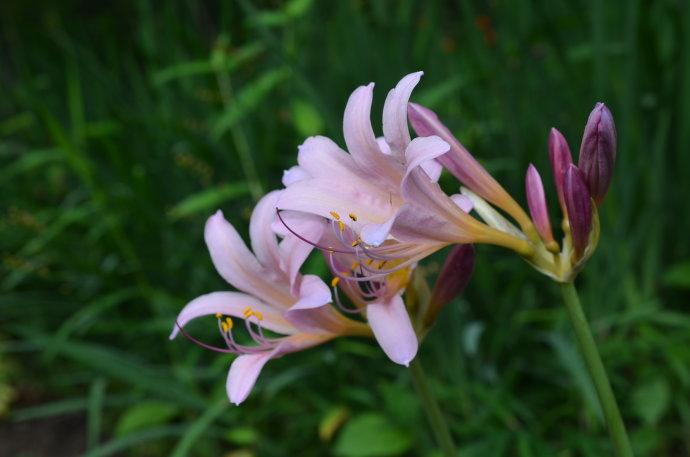

Deer and onions are also called Xia Shuixian and Lycoris radiata.
Growth habit of deer and scallion
The deer prefer the light, which is suitable for growing in moist environment. But it can stand half overcast and dry. Deer or onions can be cold resistant, and vitality is very tenacious. The soil is not high, fertile and well drained.
The value of deer and onions
The medicinal value of deer onion is very high. It can be extracted from bulb and is used as medicine. It has very good therapeutic effect.
Its landscape value is very high, because the flower more beautiful, suitable for ground cover plants, or flower, and other plant collocation has very good effect.
In addition, the deer onion because the flower stalk is long, the flower is exquisite, may take the cut flower material to raise.
Morphological character
Deer and onions are perennial herbs
Bulb ovate, ca. 5 cm in diam.
Leaves in autumn, about 8 centimeters long, immediately withered, and then second years early spring leaves again, leaves banding, top blunt round, green, about 2 cm wide.
The stem height of about 60 cm; bracts 2, lanceolate, ca. 6 cm long, 1.3 cm wide; umbel 4-8 flowers; flowers purple red; perianth lobes oblanceolate, ca. 7 cm long, 1.8 cm wide, margin basally slightly shrunken, perianth tube ca. 2 cm; stamens and perianth lobes subequal; outer perianth slightly out of style. Flowering August.


0
0
文章
Dummer. ゛☀
2017年06月30日

Another name for snow lotus
The snow lotus leaf also called white chrysanthemum, finely divided silver leaf chrysanthemum, white snow, Miaoju rebaudian.
Growth habit of snow lotus
Snow lotus is a relatively non heat resistant plant, which is easy to die under high temperature, coupled with high humidity. The snow lotus prefers cool and humid climate, and the suitable growth temperature is between 20 and 25 degrees centigrade, and requires sufficient illumination. Choosing soil is generally a choice of loose, fertile soil, sandy soil, or humus rich soil.
Winter management of snow lotus
Winter, we should pay attention to the cultivation of snow lotus leaves, attention is to pay attention to heat preservation. Move the potted plants indoors or in a greenhouse, or cover them with warmth. And, in winter, snow lotus should also be careful to keep enough light.
chemical composition
Aboveground plant alkaloid jacobine (24 - 6), Senecio feering (24 - 9), othosenine (otosenine), retrorsine (24 - 7), the seed containing senecionine (24 - 8).


The snow lotus leaf also called white chrysanthemum, finely divided silver leaf chrysanthemum, white snow, Miaoju rebaudian.
Growth habit of snow lotus
Snow lotus is a relatively non heat resistant plant, which is easy to die under high temperature, coupled with high humidity. The snow lotus prefers cool and humid climate, and the suitable growth temperature is between 20 and 25 degrees centigrade, and requires sufficient illumination. Choosing soil is generally a choice of loose, fertile soil, sandy soil, or humus rich soil.
Winter management of snow lotus
Winter, we should pay attention to the cultivation of snow lotus leaves, attention is to pay attention to heat preservation. Move the potted plants indoors or in a greenhouse, or cover them with warmth. And, in winter, snow lotus should also be careful to keep enough light.
chemical composition
Aboveground plant alkaloid jacobine (24 - 6), Senecio feering (24 - 9), othosenine (otosenine), retrorsine (24 - 7), the seed containing senecionine (24 - 8).


0
0
成长记
elvenking42
2017年06月28日

finally showing new growth. unfortunately a leaf is yellowing, I will withhold from watering until it looks healthier.

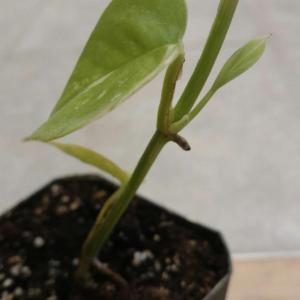




1
0
成长记
Alisha Adent
2017年05月23日

experimenting with water for growth. Cut off Sun burned portions today and moved plant inside to see how it does. Need to purchase a water spritzer.


1
0
文章
粉团
2017年05月22日

Aspirin tablets can be used for growing healthy and productive plants, and it really WORKS. Here’re some of the best ASPIRIN uses in the garden!
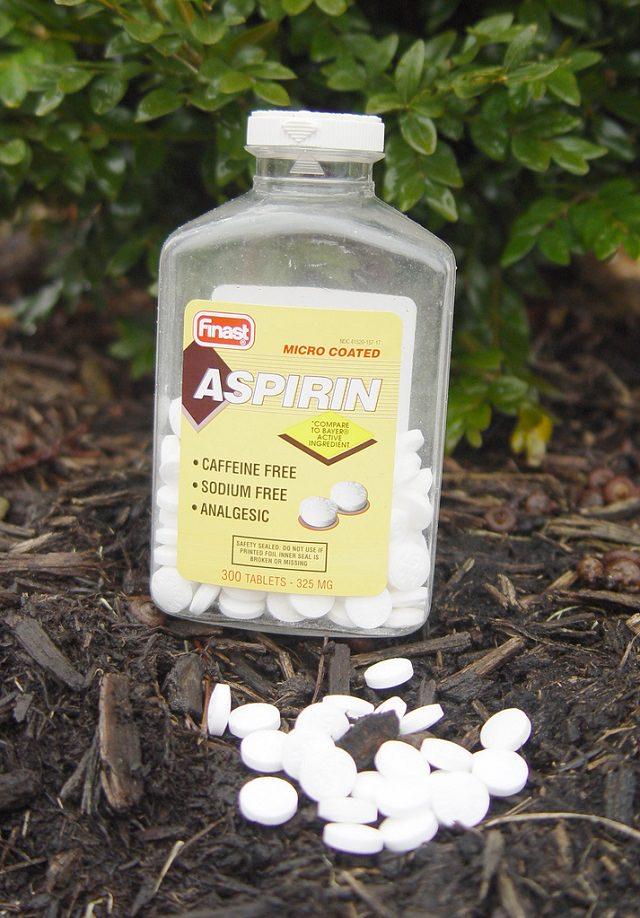
1. Increases the growth and productivity of plants
At the University of Rhode Island, gardeners made a solution containing 4 crushed aspirin tablets and 4 gallons of water and then sprayed the solution on their vegetable gardens every three weeks throughout the growing season. At the end of the season, they found that the treated plants grew more quickly and were more fruitful than the group that was left untreated.
They concluded that aspirin leads to increased vitamin C content and greater growth in plants.The science behind this claim
Aspirin contains an active ingredient known as salicylic acid. It is derived from willow bark. This acid enhances the immune system of plants (Plants prepare it naturally but in lower amounts) especially those in the nightshade family. Plants subjected to it get the boost in immunity power, which helps them in combating with pests and microbial attack and prevents the formation of fungus leading to increased growth rate of plants. Visit the New Scientist to learn more about this in detail.
2. It helps plants combating fungal diseases

Verticillium and fusarium wilt are common fungal diseases widely distributed in soil and can wipe out an entire crop in a matter of days. Fortunately, according to a recent study by the US Department of Agriculture, the use of aspirin spray can significantly reduce the spread of fungus on the plant. It is also helpful in blight. Visit the Dailymail to learn to learn how Aspirin helps tomatoes!
The science behind this claim
Apparently, plants produce small amounts of salicylic acid naturally especially when they are stressed. The salicylic acid creates a systematically acquired resistance protecting the plants against microbial attack, drought, and even insect attack. Since salicylic acid is the active ingredient in aspirin, when a solution of aspirin is sprayed on the plants, the amount of salicylic acid in the plants is increased which in turn boosts their immune system protecting the seedlings and plants from soil-borne diseases, bacteria, and fungi.
Gardeners can spray their plants with a solution of aspirin tablet mixed in distilled water. The drug is especially effective in warding off diseases in the nightshade family which include tomatoes or potatoes. You can also soak the seeds in the aspirin solution just before sowing to improve germination.
3. Help cut plants and flowers to last longer

Are you wondering how you can keep your cut flowers looking fresh for a long time? It is possible by adding aspirin to the vase water. To achieve this, crush an aspirin tablet, dissolve it in water and add the solution to a vase. Visit Lifehacker to learn more!
The science behind this claim
According to Judy Jernstedt, the professor in plant and soil department at the University of California, Davis, the salicylic acid reduces the production of ethylene. With reduced ethylene present, floral wilting is delayed, and the cut plants can last longer.
Also, the anti-fungal properties of salicylic acid that dissolve into the vase water slows down the growth of mold which if it enters the flower stem can clog the vascular tissue leading to the death of the flower. For longer lasting fresh flowers, be sure to change the water regularly.
4. Propagate plants from cuttings successfully
Rooting hormone helps in propagating plants from cuttings and using it improves the success rate. Take a cup of distilled water and dissolve one uncoated aspirin tablet and then keep the cut end of the plant in this rooting solution for a few hours before planting. It’ll work!
The science behind this claim
Instead of using willow bark, which contains growth hormones, you can use aspirin to prepare your own rooting solution. It contains the same salicylic acid that is found in willows and works the same.
How to Use Aspirin in the Garden
You should be careful when using aspirin in the garden as too much can burn or damage the plants. Improper use may lead to the development of brown spots that makes them appear to have burnt foliage. This guide on how to properly use aspirin in the garden can help prevent any damage to the plants.
The Right Dosage
The right dosage of aspirin should not be more than a tablet for each liter of water. Begin by crushing the tablet and ensure it is well dissolved before spraying. *It has been observed by gardeners that aspirin dissolves well in distilled water!
When spraying, do it in the morning as plants tend to absorb best at this time. Also, spraying in the morning helps to avoid harming the beneficial insects such as bees and other pollinators, which are active later and it gives the plants a chance to dry too.
You should also pay attention to the response of the plants to the treatment as not all plants are suitable for aspirin treatment. Plants in the nightshade family, of course, such as tomatoes, peppers, potatoes and eggplants benefit greatly from aspirin regimen.

1. Increases the growth and productivity of plants
At the University of Rhode Island, gardeners made a solution containing 4 crushed aspirin tablets and 4 gallons of water and then sprayed the solution on their vegetable gardens every three weeks throughout the growing season. At the end of the season, they found that the treated plants grew more quickly and were more fruitful than the group that was left untreated.
They concluded that aspirin leads to increased vitamin C content and greater growth in plants.The science behind this claim
Aspirin contains an active ingredient known as salicylic acid. It is derived from willow bark. This acid enhances the immune system of plants (Plants prepare it naturally but in lower amounts) especially those in the nightshade family. Plants subjected to it get the boost in immunity power, which helps them in combating with pests and microbial attack and prevents the formation of fungus leading to increased growth rate of plants. Visit the New Scientist to learn more about this in detail.
2. It helps plants combating fungal diseases

Verticillium and fusarium wilt are common fungal diseases widely distributed in soil and can wipe out an entire crop in a matter of days. Fortunately, according to a recent study by the US Department of Agriculture, the use of aspirin spray can significantly reduce the spread of fungus on the plant. It is also helpful in blight. Visit the Dailymail to learn to learn how Aspirin helps tomatoes!
The science behind this claim
Apparently, plants produce small amounts of salicylic acid naturally especially when they are stressed. The salicylic acid creates a systematically acquired resistance protecting the plants against microbial attack, drought, and even insect attack. Since salicylic acid is the active ingredient in aspirin, when a solution of aspirin is sprayed on the plants, the amount of salicylic acid in the plants is increased which in turn boosts their immune system protecting the seedlings and plants from soil-borne diseases, bacteria, and fungi.
Gardeners can spray their plants with a solution of aspirin tablet mixed in distilled water. The drug is especially effective in warding off diseases in the nightshade family which include tomatoes or potatoes. You can also soak the seeds in the aspirin solution just before sowing to improve germination.
3. Help cut plants and flowers to last longer

Are you wondering how you can keep your cut flowers looking fresh for a long time? It is possible by adding aspirin to the vase water. To achieve this, crush an aspirin tablet, dissolve it in water and add the solution to a vase. Visit Lifehacker to learn more!
The science behind this claim
According to Judy Jernstedt, the professor in plant and soil department at the University of California, Davis, the salicylic acid reduces the production of ethylene. With reduced ethylene present, floral wilting is delayed, and the cut plants can last longer.
Also, the anti-fungal properties of salicylic acid that dissolve into the vase water slows down the growth of mold which if it enters the flower stem can clog the vascular tissue leading to the death of the flower. For longer lasting fresh flowers, be sure to change the water regularly.
4. Propagate plants from cuttings successfully
Rooting hormone helps in propagating plants from cuttings and using it improves the success rate. Take a cup of distilled water and dissolve one uncoated aspirin tablet and then keep the cut end of the plant in this rooting solution for a few hours before planting. It’ll work!
The science behind this claim
Instead of using willow bark, which contains growth hormones, you can use aspirin to prepare your own rooting solution. It contains the same salicylic acid that is found in willows and works the same.
How to Use Aspirin in the Garden
You should be careful when using aspirin in the garden as too much can burn or damage the plants. Improper use may lead to the development of brown spots that makes them appear to have burnt foliage. This guide on how to properly use aspirin in the garden can help prevent any damage to the plants.
The Right Dosage
The right dosage of aspirin should not be more than a tablet for each liter of water. Begin by crushing the tablet and ensure it is well dissolved before spraying. *It has been observed by gardeners that aspirin dissolves well in distilled water!
When spraying, do it in the morning as plants tend to absorb best at this time. Also, spraying in the morning helps to avoid harming the beneficial insects such as bees and other pollinators, which are active later and it gives the plants a chance to dry too.
You should also pay attention to the response of the plants to the treatment as not all plants are suitable for aspirin treatment. Plants in the nightshade family, of course, such as tomatoes, peppers, potatoes and eggplants benefit greatly from aspirin regimen.
2
0






